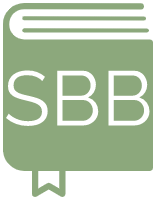Many of us wish to change our behaviors – to be fitter, healthier, smarter, wealthier. However, we typically jump in to try and change our behavior drastically at one point of time, the beginning of a new year, the first of the month, the beginning of the week.
However – it is important to consider what really drives behavior change and different ways we can attempt to change our behavior. These we will call the 3 layers of behavior change.
The 3 Layers of Behavior Change
- Changing Outcomes – changing what results and goals you are working towards
- Changing Process – changing the systems and habits that you practice to get toward your goal
- Changing Identity – changing your beliefs about yourself and self-image
Changing Outcomes
Changing outcomes is the most often thought of when looking to make behavior change. This involves changing the goal or results that you are working towards. If you don’t have a good goal (a SMART goal is a good place to start), it will be difficult to make changes in your life.
First things first, you need to get clear on what you’re working towards – once this is clear, you can be motivated and inspired to make behavior changes – however this isn’t enough to make a sustainable change in your life.
Changing Process
This is where we begin to make changes in your routine and your daily choices and habits to begin working toward your desired goals and ultimately life! Changing the process involves looking into how your daily, simple, and small habits form a system that propels your life in a net direction.
What I mean by this is that your lifestyle change is the result of the accumulation of small changes adding up over time and over each other. You can read more about how these changes stack up in this article about why it’s important to focus on the system!
Changing Identity
The third and most often forgotten layer of behavior change is… identity change!
Identity – The fact of being who or what a person or thing is.
Derived from the Latin words essentitas (“being”) and identidem (“repeated”)
It is one thing to say I’m the type of person who wants this. It’s something very different different to say I’m the type of person who is this.
Identity-based habits focus on who you wish to become (not what you wish to achieve).
For example, rather than wanting to be an author, you want to be the type of person who writes everyday; rather than wanting to be an athlete, you want to be the type of person who works out everyday. Rather than wanting to be an artist, you want to be the type of person who creates something everyday.
So how do we tackle changing our beliefs about ourselves and our own self-image? This is a simple 2 step process to get started.
The 2 Step Process to Identity Change:
- Decide the type of person you want to be
- Prove it to yourself with small wins
Importantly here, there is a feedback loop taking place – the more you act like the person you want to be, the more you identify as the person you wish to become. The more you identify as the person you wish to be, the more you lean into the habits associated with that identity.
Simply put: Your habits shape your identity and your identity shapes your habits.
OTHER POSTS INSPIRED BY JAMES CLEAR’S ATOMIC HABITS:
Share this:
- Click to share on X (Opens in new window) X
- Click to share on Facebook (Opens in new window) Facebook
- Click to share on LinkedIn (Opens in new window) LinkedIn
- Click to share on Reddit (Opens in new window) Reddit
- Click to share on Pinterest (Opens in new window) Pinterest
- Click to share on WhatsApp (Opens in new window) WhatsApp



